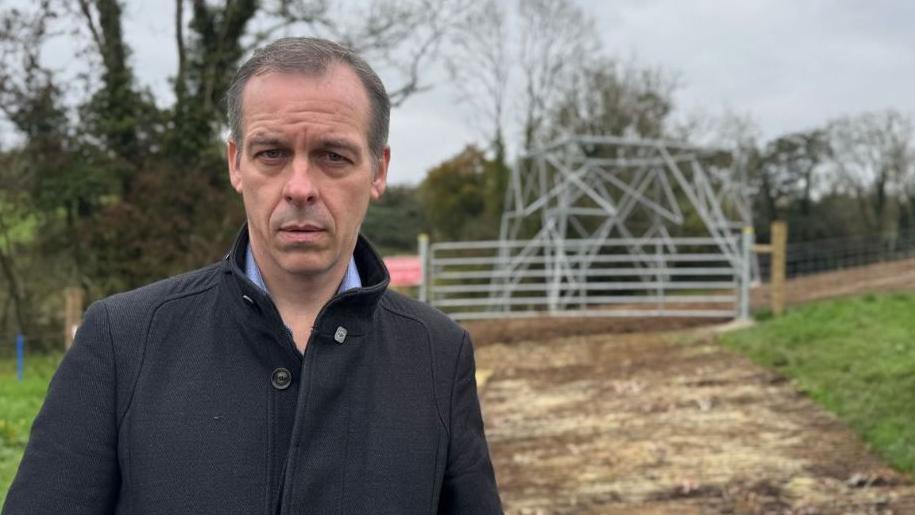Your questions answered on the long delayed north-south power project
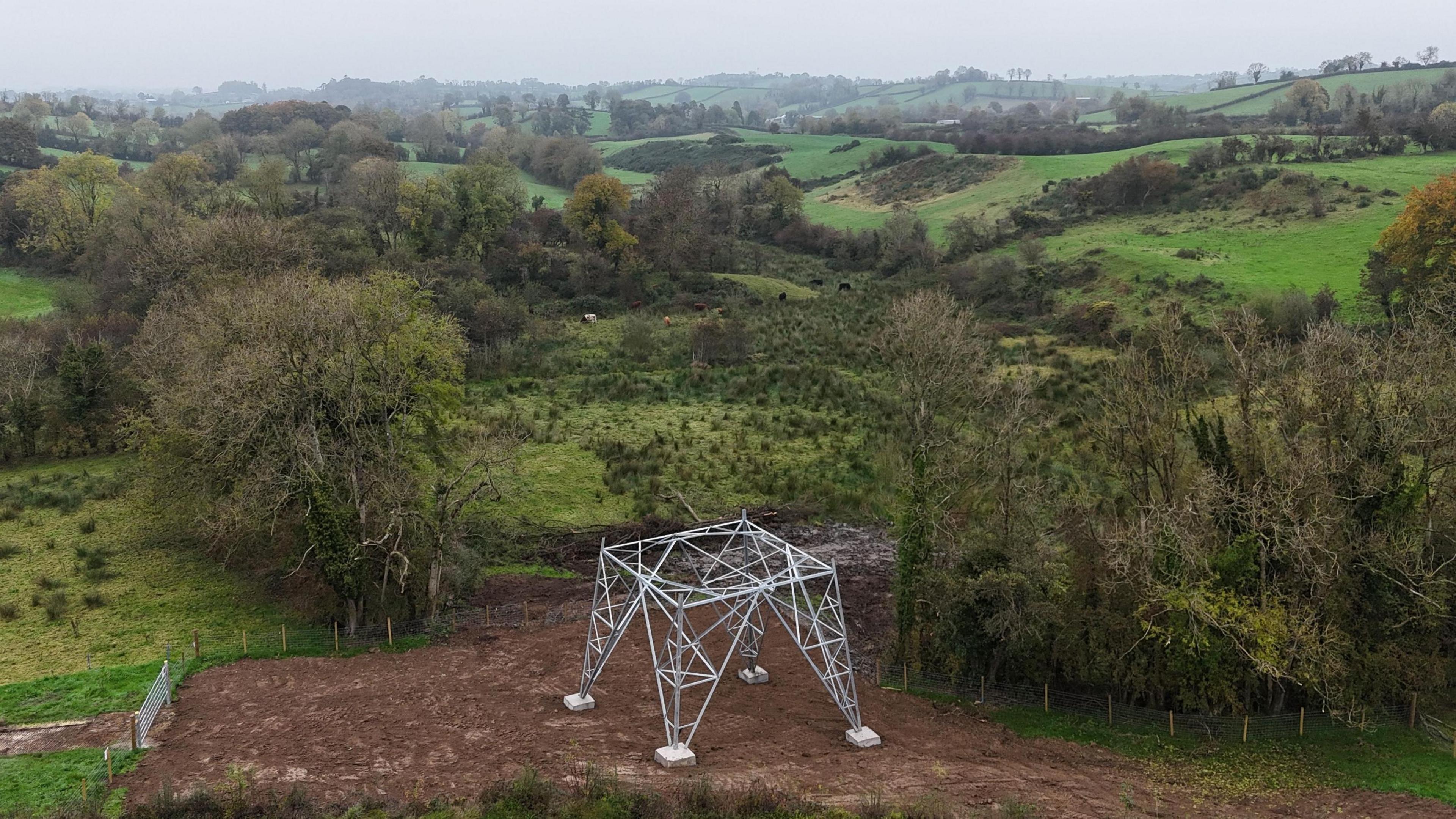
One of the six pylons currently under construction for the northern leg of the north-south interconnector
- Published
It is one of Northern Ireland's biggest infrastructure projects – and one of its most delayed.
First proposed in 2006, and granted planning permission in 2020, the north-south interconnector is now not expected to be completed until 2031.
The €350m (£308m) scheme has been endorsed by successive infrastructure ministers, including the current officeholder, Liz Kimmons.
Depending on who you ask, it's either a key chance to meet Northern Ireland's climate change targets and deliver energy security, or a threat to pristine countryside and rural communities.
What is the north-south interconnector?

At its simplest, it is a set of high voltage power lines intended to carry massive amounts of electricity across the border.
Most of the fuss is over where it will be built, and how.
The project received planning permission to run these high voltage cables overhead on large pylons along a 138km route from Turleenan in County Tyrone to Woodland in County Meath.
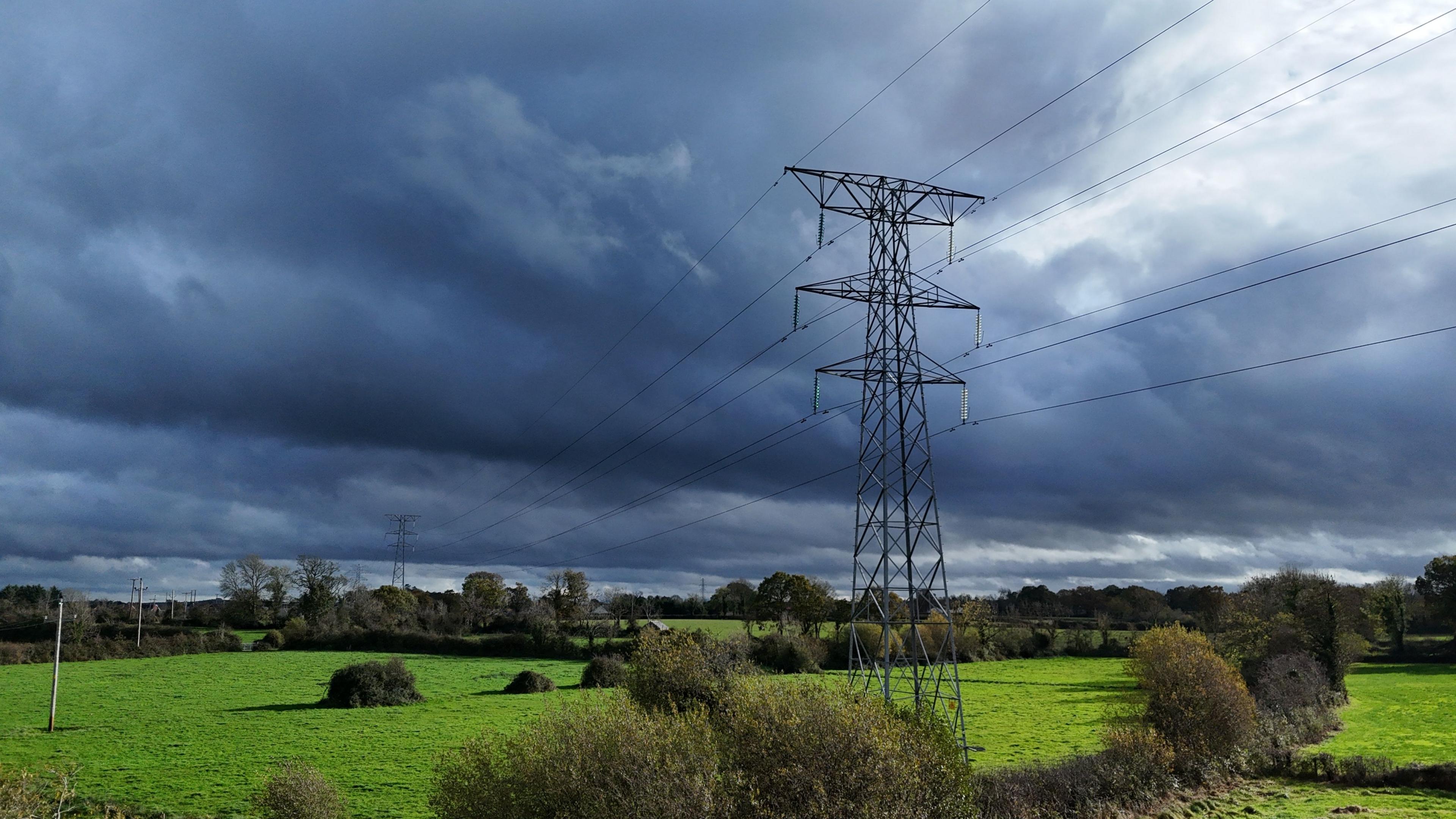
A smaller pylon carrying conventional power cables near Portadown.
Who runs NI's electricity grid?
SONI operates the electricity grid in Northern Ireland.
Owned by the Republic of Ireland's grid operator, Eirgrid, it has been one of the driving forces in the scheme's development.
It says that the project is vital to energy security, will lower consumers' bills and help meet green energy targets.
Currently about 43% of the electricity Northern Ireland uses comes from renewable sources, like wind and solar.
But Stormont's 2022 Climate Change Act sets a legallybinding target of 80% to be achieved by 2030.
Energy consultancy firm Cornwall Insight estimates that delays to the interconnector will see the level of electricity from renewable sources fall to 35% by 2030.
Where will the power go?
Northern Ireland is part of the Single Electricity Market (SEM), along with the Republic of Ireland.
It was set up in 2007 in the hope that competition in the wholesale energy market would drive lower prices for consumers.
All electricity used in Northern Ireland or the Republic is bought and sold through that central market.
But for the market to work efficiently, power needs to be able to be get from one part of the network to another.
Today, that isn't always possible.
SONI says the inadequacy of the current interconnector at the border means power can't always be moved in the quantities required.
Flow across that interconnector has to be constrained to ensure that the line won't fail, something which could cause blackouts.
This constraint creates inefficiencies that SONI claims cost Northern Ireland consumers about £19m a year.
So what's the problem?
Electricity has a storage problem.
Batteries are great for the relatively small amounts of electricity needed for phones or even cars, but the huge amounts of electricity required to power entire neighbourhoods and factories are another story.
The technology to store that power is still in its early stages, and the facilities required don't currently exist in Northern Ireland.
And it can't just go into the system.
Electricity oversupply causes problems for the grid and the machines that run on it.
So the supply of electricity needs to match demand at all times, but sometimes that creates waste.

A wind turbine used to generate electricity from renewable sources
Imagine a windy night on rural part of the north Antrim cost. In those conditions, turbines should be whirring, generating enough electricity to power thousands of homes.
But it's night-time and there aren't enough houses or factories nearby to use up that power.
So since it can't be stored and to prevent an overload, the grid operator will essentially tell the turbine owner to avoid generating electricity by shutting down or pointing some turbines in the wrong direction.
A chance to generate clean energy is wasted. Grid operators call this dispatching down.
Renewable energy generation has been declining in Northern Ireland since 2022.
Cornwall Insight estimates that almost 30% of wind energy generated in Northern Ireland goes unused due to restrictions in the power grid.
Proponents of the interconnector say it would help solve this problem.
If energy generated by those wind turbines could be sent where it is needed, a greater portion of our total electricity use would come from domestic renewables – rather than more expensive energy imports.
So it would not only be a boost to energy security, but a potential route to lower consumer electricity bills.
But not everyone is convinced.
Who is against the interconnector?
Some of those living near the proposed route are unhappy about the plans.
More than 100 new pylons will have to be built along the interconnector's route in Northern Ireland, with six of those pylons already under construction.
Kevin Redmond lives near one of those pylons.
"You have those towering pylons in such a beautiful rural idyllic setting. It will be absolutely destroyed by that, there's no question."
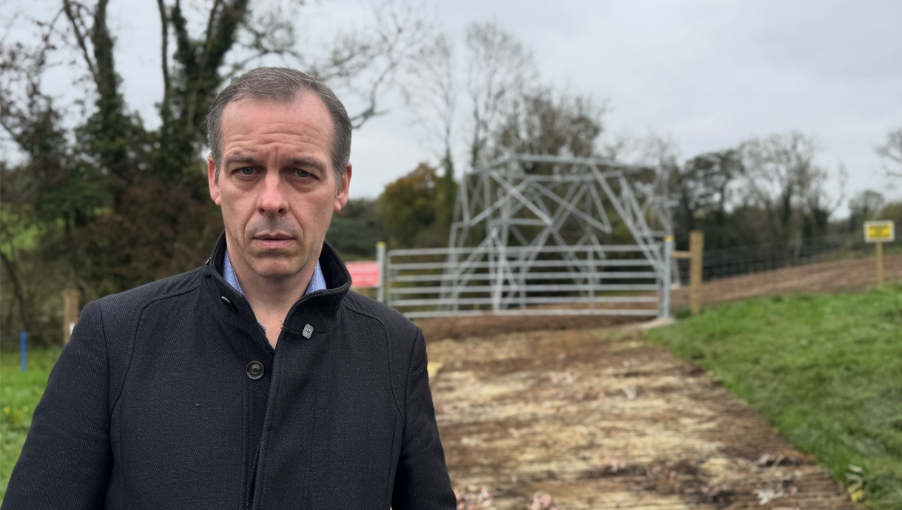
The pylon is under construction near Kevin Redmond's home
He says there was a lack of consultation, and that he only became aware a pylon was actually going to be built on the day work began.
"I was never consulted, it's disappointing. You'd think with something as significant as what I have behind me you'd get a letter or somebody might appear."
John Woods - a leading figure in the campaign - launched a fresh legal challenge against the project last week.
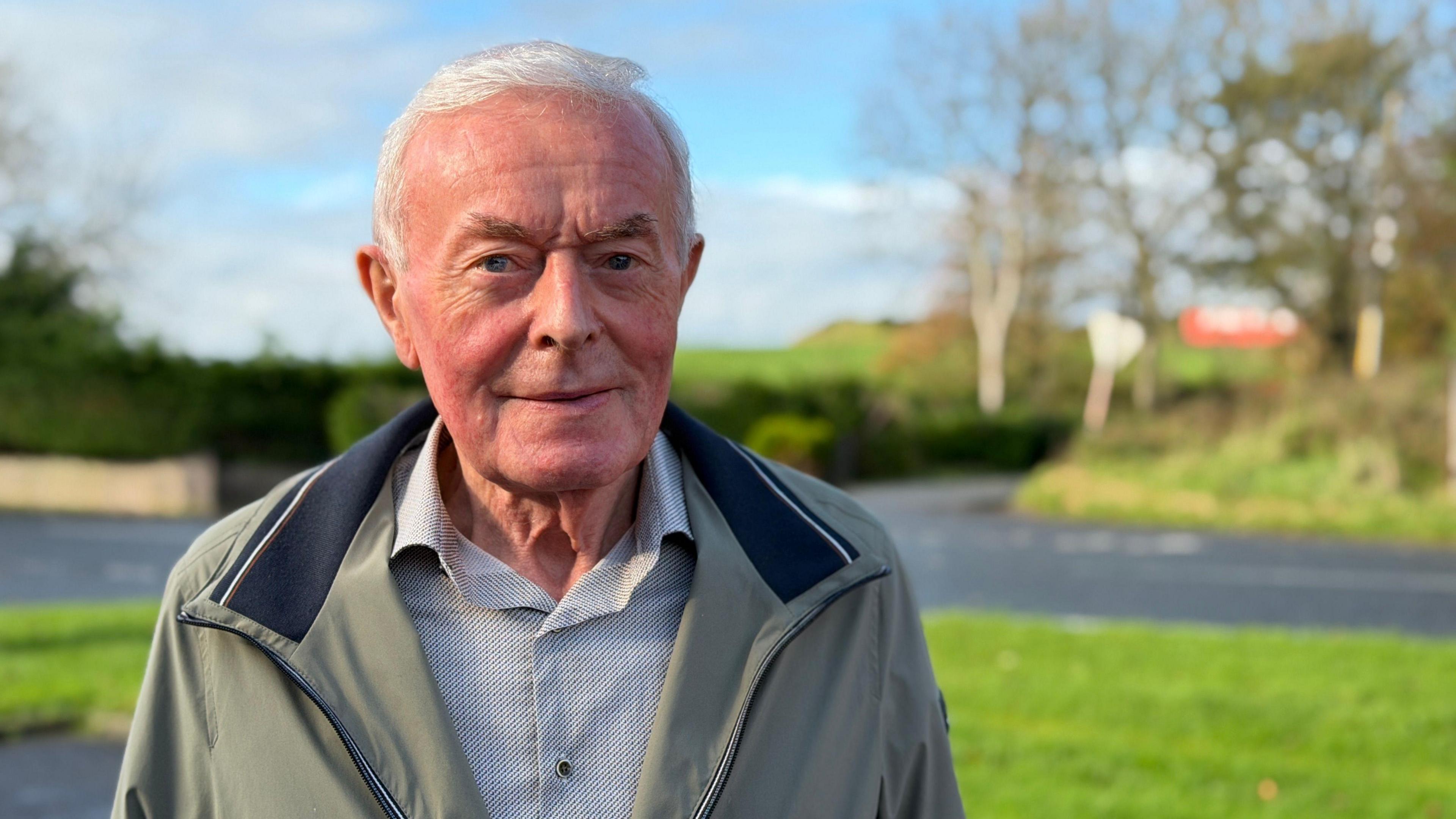
John Woods says the interconnector will negatively impact rural communities
He says the scheme will give greater benefits to a growing and energy hungry southern economy than to consumers north of the border, where energy consumption has been slowly decreasing in recent years.
"Meta, Apple and Google can pay any price to keep their data centres running. Why should a person on the Shankill Road or the Falls Road be bidding for their electricity against that?"
Mr Woods says he fears that the project, particularly the construction of so many large pylons, will harm rural communities.
Could it be put underground?
At an early stage, the project considered putting its high voltage cables underground.
Although this is a less objectionable option to opponents, a number of studies have determined that this is not feasible.
SONI says undergrounding is "technically very challenging and exponentially more costly than the standard overhead line which has received full approval from planning authorities."
Related topics
- Published2 November
